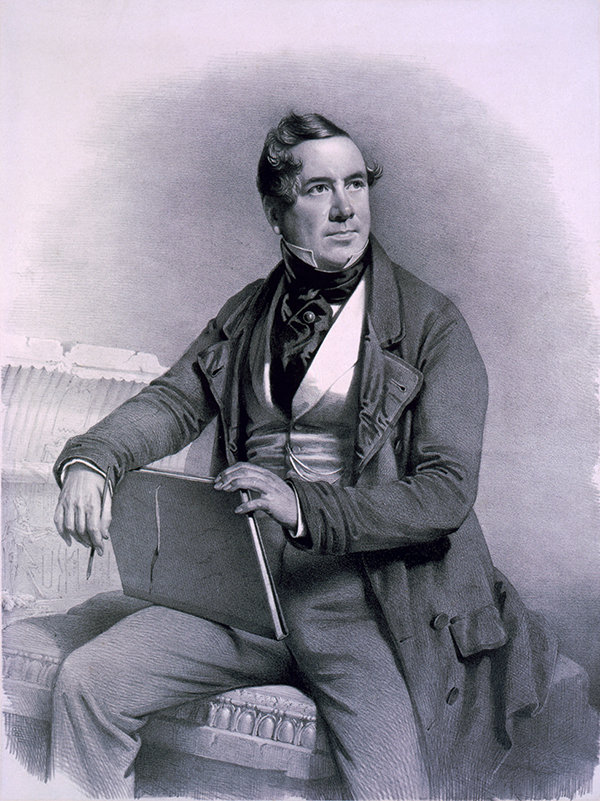David Roberts (October 24, 1796 - November 25, 1864) was a Scottish painter known for his detailed and romanticized depictions of landscapes and architectural scenes. Born in Edinburgh, Roberts apprenticed under a house painter and interior designer but began to study art on his own in his free time. He began painting stage scenes for traveling circuses and continued painting houses, trying his hand at landscapes in the evenings. In 1819, Roberts became the stage painter at the Theatre Royal in Edinburgh. In 1822, he moved to London to continue his work in stage painting, but began producing more 'serious' art, and gained some recognition as a gifted painter. In 1833, he travelled to Spain, a trip that resulted in a series of lithographs that were well received. But Roberts became most famous for his series of lithographs titled The Holy Land, Syria, Idumea, Arabia, Egypt, and Nubia, published between 1842 and 1849, based on sketches made during his travels in those lands between 1838 and 1840. The prints made Roberts one of the foremost painters in the 'Orientalist school' in Britain. Following this crowning achievement of his career, Roberts produced a series of views of Italy in the 1850s, and of scenes of London in the last years of his life.


